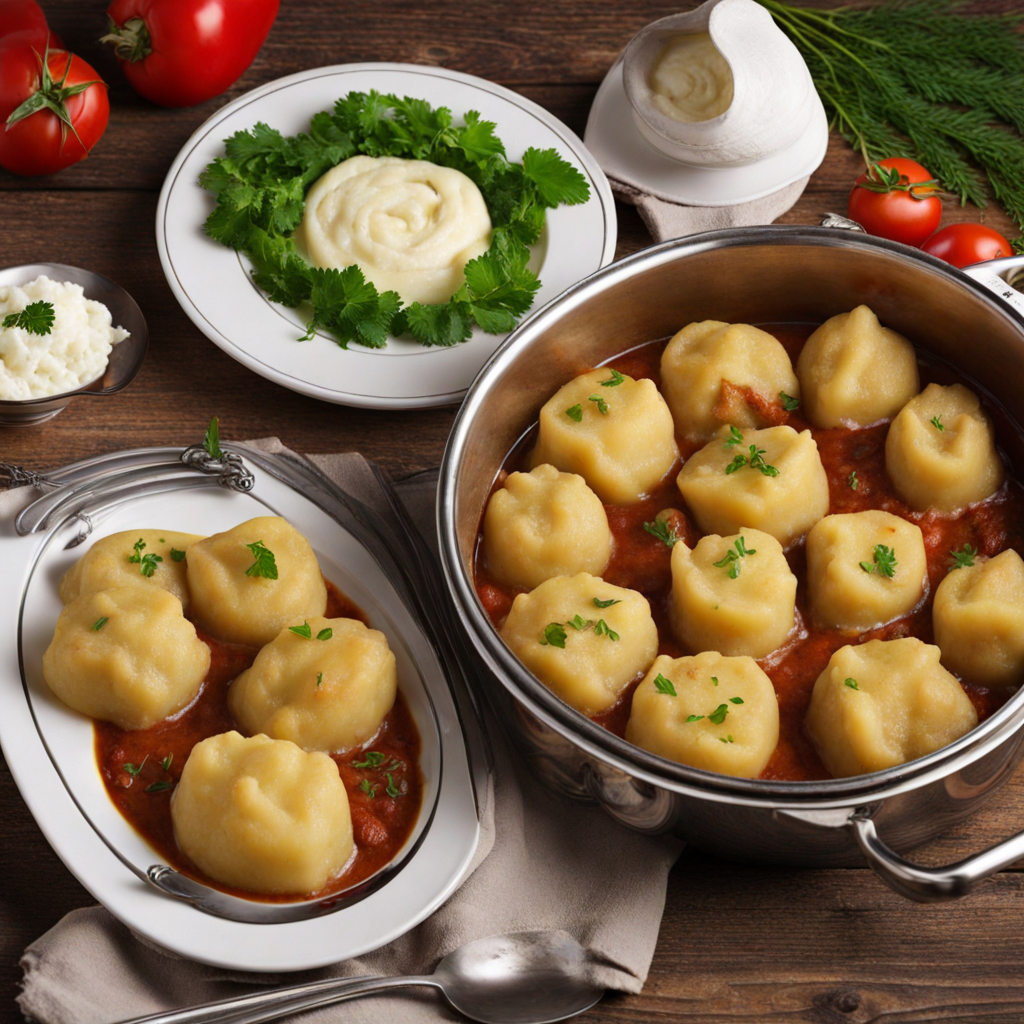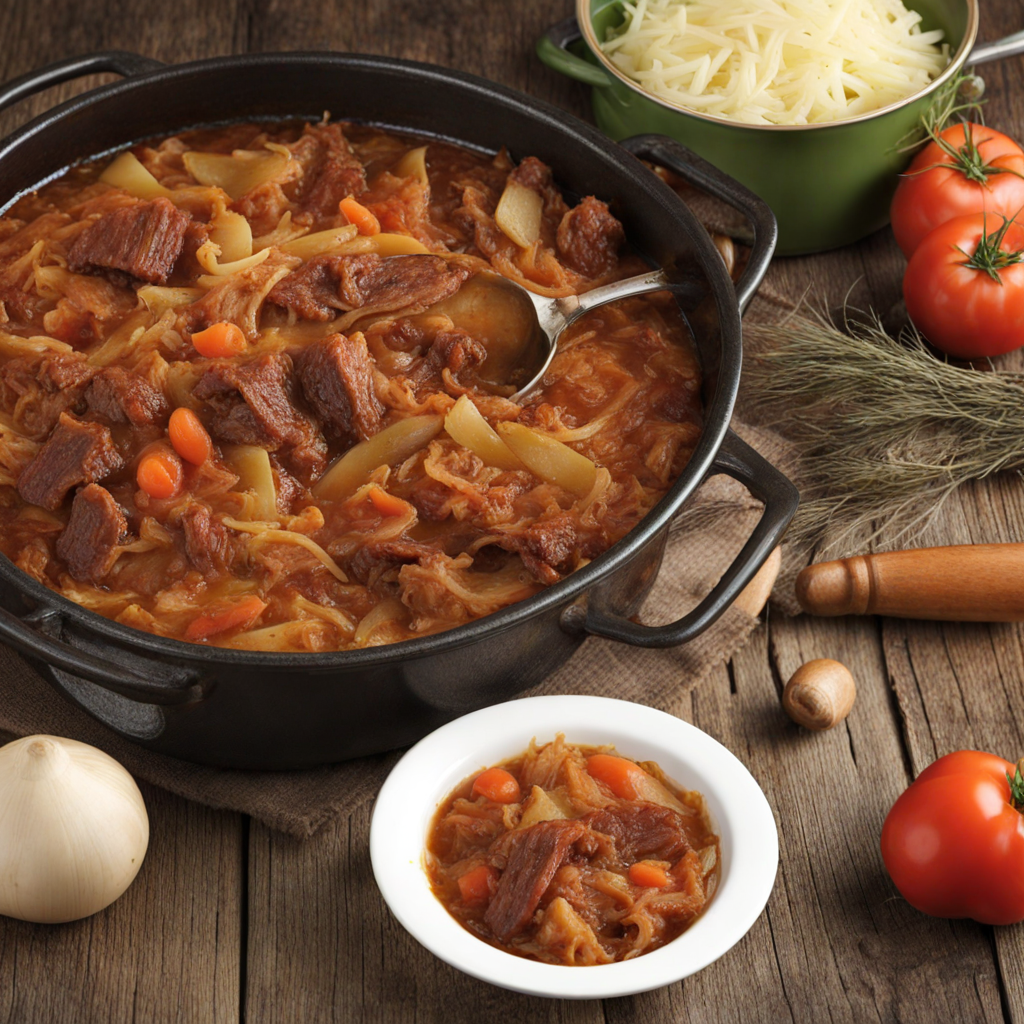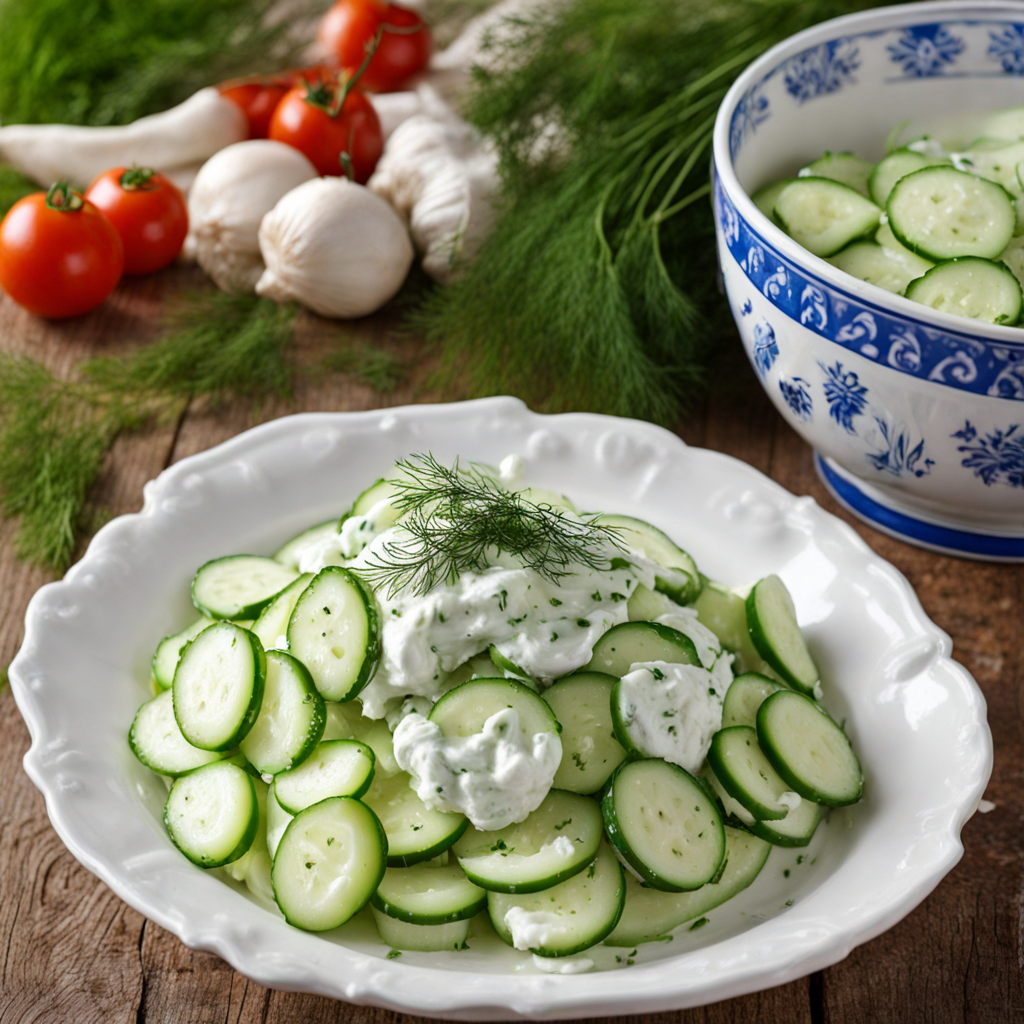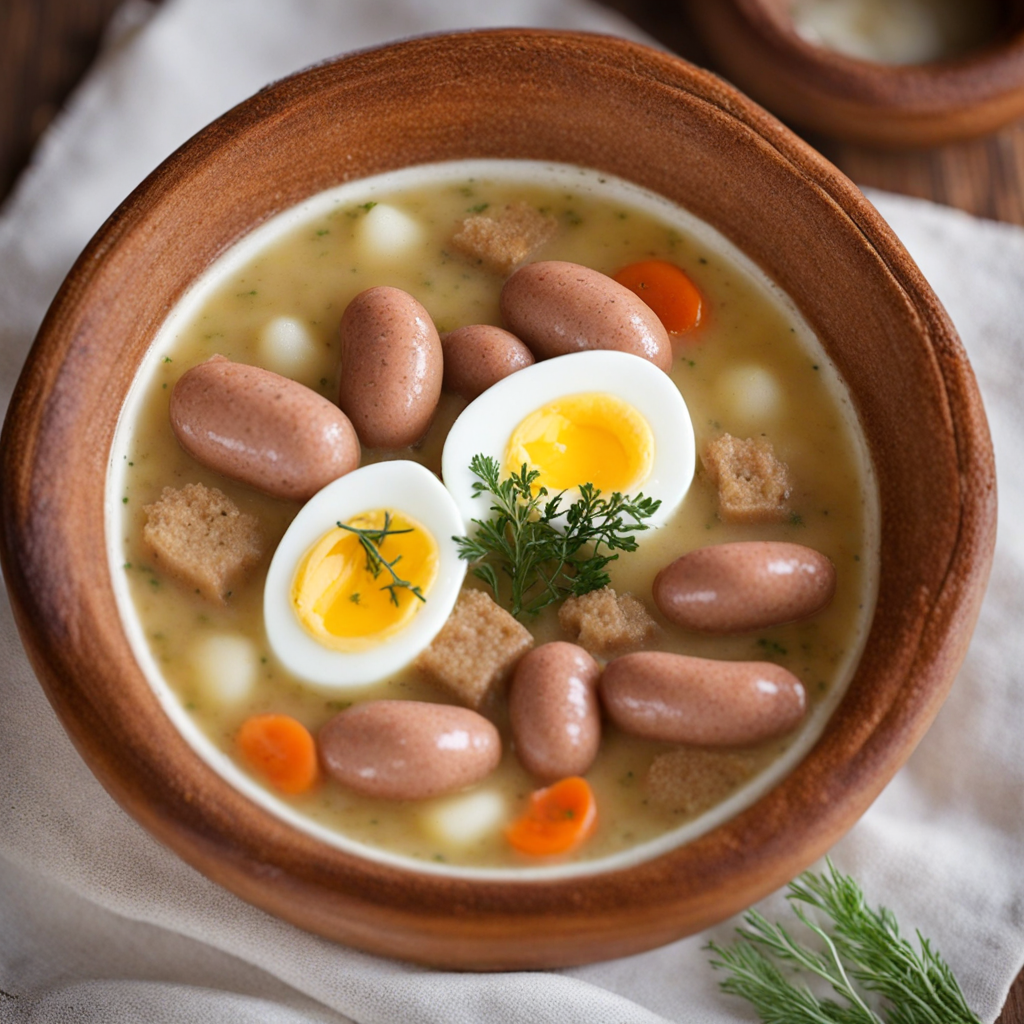Pyzy
Pyzy are a delightful Polish dish that showcases the country's rich culinary traditions. These soft, dumpling-like creations are primarily made from a simple mixture of grated raw potatoes and cooked potatoes, which gives them a unique texture—light and fluffy on the inside with a slightly chewy exterior. Often shaped into small balls or ovals, pyzy can be filled with various savory ingredients, such as seasoned meat, mushrooms, or cheese, making them a versatile dish that can cater to different tastes and preferences. When served, pyzy are typically adorned with a generous topping of sautéed onions and crispy bacon or served with a side of sour cream, elevating their flavor profile. The combination of the creamy filling and the robust toppings creates a harmonious balance that tantalizes the taste buds. As you bite into a pyza, you experience the comforting warmth of the starchy exterior, quickly followed by the rich and savory filling that bursts forth, delivering a satisfying and hearty sensation. This dish is often enjoyed during family gatherings, festive occasions, or as a hearty meal during cold winter evenings. Pyzy not only embody the essence of Polish comfort food, but they also offer a glimpse into the country's culinary heritage, making them a must-try for anyone looking to explore new flavors. Whether you choose to savor them with a classic filling or experiment with contemporary variations, pyzy promise an unforgettable experience that will leave you craving more.
How It Became This Dish
Pyzy: A Culinary Journey Through Polish History Poland is a country steeped in a rich culinary tradition that reflects its diverse history and cultural influences. Among its many beloved dishes, Pyzy stands out as a symbol of Polish comfort food, embodying the heart and soul of the nation’s gastronomy. A staple in various regions, Pyzy are potato dumplings that have evolved over centuries, reflecting both the agricultural bounty of the land and the cultural exchanges that have shaped Polish identity. Origins of Pyzy The origins of Pyzy can be traced back to the early medieval period in Poland, around the 10th century. The name itself is derived from the Old Polish word "pyz," which refers to a dumpling or a ball of dough. At this time, staple ingredients in the Polish diet included grains, potatoes, and various forms of dairy. The introduction of the potato in the 18th century, brought from South America, revolutionized Polish cuisine. It quickly became a vital component of local diets, particularly in rural areas where it thrived in the colder climate. The earliest versions of Pyzy were likely simple, made from a mixture of flour and the readily available potatoes. These dumplings were often boiled and served with a variety of accompaniments, reflecting the agricultural practices of the time. Over the centuries, as Poland's social and economic landscape changed, so too did the ingredients and methods of preparing Pyzy. Cultural Significance Pyzy are not just food; they are a cultural artifact that tells the story of Poland’s history, its people, and their resilience. In the past, these dumplings were a common sight on the tables of both peasants and nobility, a testament to their versatility and appeal. They were often served during festive occasions, family gatherings, and communal meals, reinforcing the importance of food as a means of social cohesion. In Polish culture, food has always been a vehicle for tradition and identity. Pyzy, with their comforting texture and hearty fillings, became emblematic of home-cooked meals, evoking memories of family kitchens and the nurturing care of mothers and grandmothers. The act of making Pyzy is often a communal affair, with families gathering to prepare the dough, fill the dumplings, and share stories, thereby passing down culinary knowledge through generations. Variations and Development As the centuries progressed, regional variations of Pyzy emerged, each reflecting local ingredients, tastes, and traditions. The most common type is "Pyzy ziemniaczane," made primarily from grated potatoes mixed with flour, which creates a soft, doughy consistency. These are often served with rich, meaty sauces or sautéed onions, making them a hearty meal for cold winters. In the Mazovia region, one can find "Pyzy z mięsem," which are filled with minced meat, often flavored with spices and herbs. The filling varies widely, from beef to pork or even chicken. This version of Pyzy emphasizes the Polish penchant for hearty, protein-rich meals, especially during the colder months. Another notable variation is "Pyzy drozdzowe," which are yeast dumplings traditionally made with flour and yeast, resulting in a fluffier texture. These are sometimes filled with fruit or sweet fillings, making them a popular dessert option. The introduction of sweet Pyzy showcases how culinary practices evolved, influenced by both local and foreign traditions, including those from neighboring countries. The Impact of Historical Events Throughout Polish history, significant events have shaped the culinary landscape, including wars, partitions, and migrations. The partitions of Poland in the late 18th century saw the country divided among Russia, Prussia, and Austria, which led to cultural exchanges and the mingling of culinary practices. As Polish communities migrated, they carried their food traditions with them, adapting recipes to the availability of ingredients in their new homes. During World War II and the subsequent communist era, traditional foods like Pyzy became a source of comfort and nostalgia for many Poles. Despite food shortages and economic hardship, families found ways to maintain their culinary heritage, often relying on simple, filling dishes like Pyzy to feed their loved ones. The resilience of Polish cuisine during these challenging times reinforced the cultural importance of traditional foods as symbols of national identity. Pyzy in Modern Poland Today, Pyzy continue to hold a cherished place in Polish cuisine, celebrated in homes and restaurants alike. The revival of interest in traditional foods has led to a renaissance of regional recipes, with chefs and home cooks alike experimenting with new flavors while honoring age-old techniques. In urban centers, gourmet interpretations of Pyzy have emerged, showcasing creative fillings such as wild mushrooms, smoked cheese, or even contemporary twists like truffle oil. Culinary festivals across Poland often feature Pyzy, celebrating their historical significance and regional variations. Moreover, the rise of food tourism has led to increased interest in traditional Polish cooking, with visitors eager to experience authentic Pyzy and learn about their preparation. Cooking classes and workshops dedicated to making Pyzy have become popular, allowing participants to immerse themselves in the culinary heritage of Poland. Conclusion Pyzy are more than just a delicious dish; they are a reflection of Poland’s rich history, cultural resilience, and the importance of community. From their humble origins as simple potato dumplings to their status as a beloved Polish specialty, Pyzy tell a story of adaptation and tradition. As Poland continues to navigate the complexities of modern life, the enduring presence of Pyzy on tables across the nation serves as a reminder of the deep connections between food, culture, and identity. Whether enjoyed in a family home or a trendy restaurant, Pyzy remain a testament to the love and care that goes into Polish cooking, ensuring that this culinary treasure will be cherished for generations to come.
You may like
Discover local flavors from Poland







